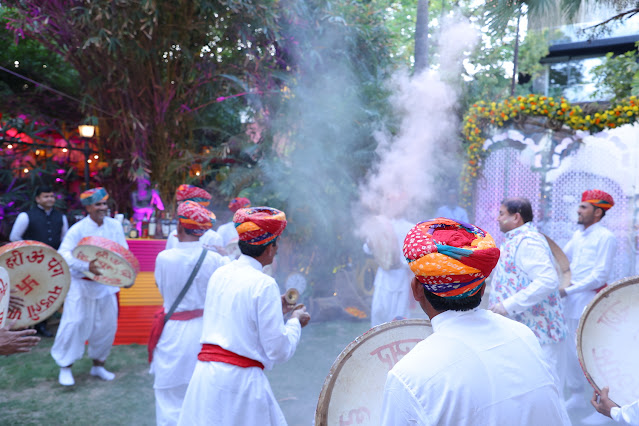Bahar Bharat | The Allure of Holi Extends Far Beyond Geographical Boundaries
Our Indian culture, resplendent as it is with its vibrant array of textiles, food, tradition and festivals, has never failed to fascinate the global community. This charm has been created not only by Indians in the motherland but also by the millions who belong to the Indian diaspora.
Seeing Indian culture on the world stage not only infuses a feeling of unity and pride among us, but also shows how it can bring joy and understanding to the world at large. I feel extremely privileged to have witnessed many Durga Puja celebrations in different parts of the world, and I have taken part in many Diwali get-togethers as well. And in these celebrations, it is heartening to witness individuals of diverse backgrounds participate with enthusiasm, curiosity and joyfulness.
There is no denying that Indian culture has moved closer to the mainstream in the West, with celebrations of Indian festivals the norm in many distinguished locations, and not just at those with Indian roots such as the Taj Hotels in New York and London, where Diwali get-togethers are an important event in the year’s calendar. There is much love for Indian food and culture, and even the current US ambassador to India regularly expresses his appreciation for Indian cuisine and cultural richness.
The most recent festival to make a splash across the globe was Holi, the festival of colours to ring in unity and welcome spring. People overseas can’t always celebrate festivals on the day itself, but schedule their events before or after the actual date, most likely on a weekend close to the date to preserve the spirit of these auspicious events and allow people to actually attend amid their busy calendars.
 |
| Performers |
Holi is, of course, also a key celebration in Santiniketan. It stands out as a renowned spectacle, drawing tourists from all around the world. Here, Holi is known as Doljatra and is observed as ‘Basanta Utsav’ — an utsav that blends human joy with nature’s ecstasy on show in the blooms of spring. Incidentally, Rabindranath Tagore’s son Samindranath started ‘Ritu Utsob’, as it was known, in 1907. The Nobel laureate’s many creations about the festival are a beloved part of his canon passed down through generations for enjoyment around the world, but there is nothing like being present in Santiniketan for Basanta Utsav.
This year, my Holi was remarkable thanks to a get-together in New Delhi at the home of a Neelima Dalmia Adhar, member of the Prabha Khaitan Foundation’s Ehsaas Women of India network. This is a non-governmental and non-profit organisation involved in the arena of literature, culture and heritage, social welfare, women empowerment and basic education.
For this occasion, we hosted diplomats from at least 40 nations in a traditional chaupal format where diplomats enjoyed playing with the gulal made with real flowers enriched with essential oils. We also curated an immersive experience showcasing traditional music and folk performances. I had invited local artistes from the Shekhawati region, from which I hail. Traditionally, Holi was more like a month-long celebration where people would gather in neighbourhoods, revel in the vibrant colours, and engage in joyful music with instruments like the dhap and the chang.
 |
| Diplomats enjoying playing with the gulal. |
For those who might not have heard of these, the chang is an instrument that comprises a circular frame made of wood with parchment stretched across one of the two faces. It is played by hand and is an inalienable element of group singing and traditional dance performances. The dhap is a small tambourine with a wooden frame played by using the flat of the palms and fingers to create rhythmic beats. To these mesmerising sounds, the daf dance was performed.
It wasn’t long before the diplomats were completely taken in by the celebrations and danced joyously to these captivating rhythms. Adding to the enjoyment was the array of traditional street food, which included chaats of every kind and a variety of other delectable delights. Evidently, our diplomat guests thoroughly enjoyed this immersive cultural experience, forging connections and fostering a deeper appreciation for India’s cultural diversity.
 |
| Sundeep Bhutoria at the Holi get-together with the diplomats. |
The allure of festivals such as Holi extends far beyond geographical boundaries. Such occasions stand testament to the enduring legacy of tradition amid modernity. This is also an event that Bollywood films and artistes have been presenting to the world. The colour and fun of Holi binds all together, amid a rainbow of hues and cheer that transcend barriers of language and nationality.
This article was published in News18 on April 08, 2024 https://www.news18.com/opinion/bahar-bharat-holi-allure-extends-far-beyond-geographical-boundaries-8843189.html

Comments
Post a Comment